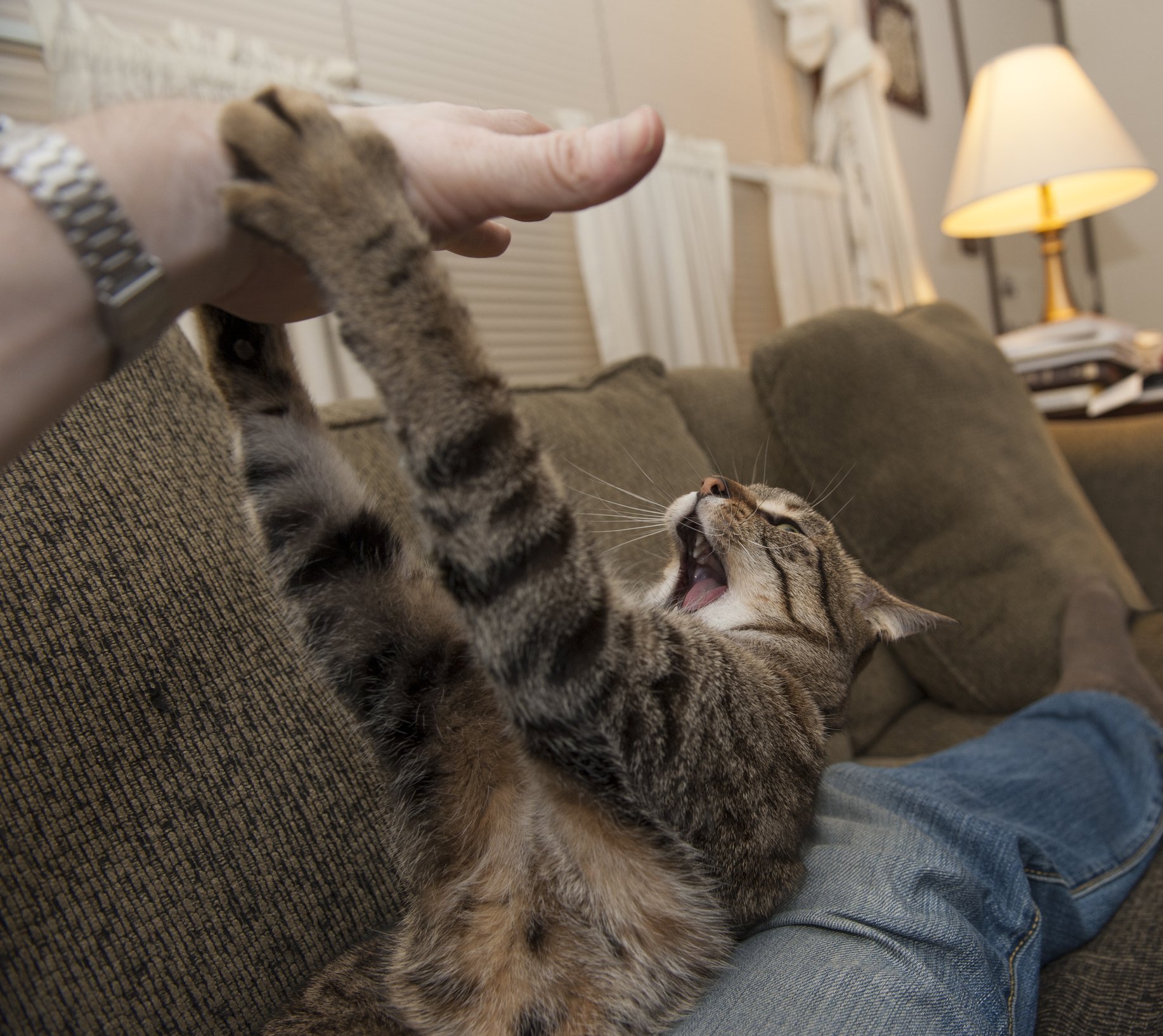When it comes to feline behavior, we have some good news: It’s often quite easy to tell whether a cat is fundamentally happy or profoundly disturbed, according to Stephanie Borns-Weil, DVM, who is head of the Tufts Animal Behavior Clinic. “Although there is likely to be a good bit of variation from animal to animal, a happy and contented cat will tend to be very sociable. She’ll engage with people, she’ll be interested in her environment, and she’ll tend to groom herself carefully. And she certainly won’t be hiding. These are some of the signs of a happy cat.”
An unhappy cat, by contrast, will tend to be totally disengaged, likely to appear listless and distressed, alienated from the humans and other animals in the household and apt to spend most or all of her day in hiding.
© Wakebravemedia Ltd | Dreamstime.com

Depending on the severity of a given problem, veterinarians will almost always try to treat a cat with behavior modification techniques. However, such an approach is apt to be augmented with the use of behavior-modifying medication if, for example, a cat’s aggressive, reclusive or otherwise unacceptable behavior is being caused by fear or anxiety and is compromising or endangering her life or is making life miserable for her owner.
Most Common Issues in Cats Related to Anxiety
The anxiety- or fear-induced feline behavioral problems that most frequently call for the use of these medications are (1) aggression toward other animals or toward a cat’s owners; (2) urine spraying, the method that a cat uses to scent-mark her territory (both male and female cats, intact as well as neutered, are apt to mark their territory in this way, especially in multicat households); and (3) a variety of fears and phobias.
Also, says Dr. Borns-Weil, “If a cat who has always behaved normally begins acting needy or withdrawn, I’m going to pay very close attention. That may be a sign that something is seriously wrong with her.” That “something,” she notes, could be a serious physical disorder, so the first task is to rule out the cause for the unusual behavior. “Some physical problems, such as hyperthyroidism, first reveal their presence with behavioral signs, like howling in the middle of the night. Treat the hyperthyroidism, and the howling stops.” In any case, it is advisable to have a cat undergo a physical examination before she is put on a regimen of behavioral medications.
Vet Evaluations of Your Cat’s Physical Health
Dr. Borns-Weil will typically shift her attention to the use of mood-altering drugs after any possible physical sources of unusual — and unacceptable — behavior have been ruled out and after behavior modifying exercises have failed. The substances that are used to reduce anxiety in cats are compounds that affect an animal’s limbic system — the group of structures in the brain whose biochemical processes affect mood and emotion.
© Martin Haas | Dreamstime

Although the action of these drugs and their impact on mood is not yet fully understood, it appears that they have an affect on the brain’s ready supply of neurotransmitters — chemicals such as serotonin, norepinepherone and dopamine — that transmit nerve impulses within the brain. Scientists believe that an improper balance of these neurotransmitters — either an excess or a deficiency — contributes to anxiety. The antianxiety medications, therefore, serve to maintain proper levels of them in the brain, thereby helping to reduce anxiety and promote calm.
Most of the medications fall into one of three categories, depending on their specific biochemical makeup and activity. These categories are (1) selective serotonin reuptake inhibitors (SSRIs); (2) tricyclic antidepressants (TCAs); and (3) monoamine oxidase inhibitors (MOAIs). These drugs are generally administered on a daily basis; the dosage may vary, and it can take four to six weeks or so to determine whether a given drug is effective.
Anxiety-reducing drugs may have side effects, such as vomiting, diarrhea, constipation and urine retention. If the side effect is mild, a veterinarian might recommend that the dosage be decreased for a few weeks. In any case, says Dr. Borns-Weil, “Giving appropriate anti-anxiety medications can facilitate the behavior modification recommended by an experienced animal behaviorist and improve the chances of successful treatment for, say, a fearful, urine-marking, or a dangerously aggressive cat.”
As for the duration of treatment that would be required for a cat to overcome a certain fear, phobia or pattern of inappropriate behavior, Dr. Borns-Weil says: “It depends on the problem that you’re dealing with. You might be able to resolve a simple case of urine marking within just a few weeks. But if there’s a complicated underlying problem, it could take a lot longer. For instance, if your cat is urine marking because another cat is bullying her, it’s going to take as long to treat the urine marking as it will to treat the inter-cat aggression.”




